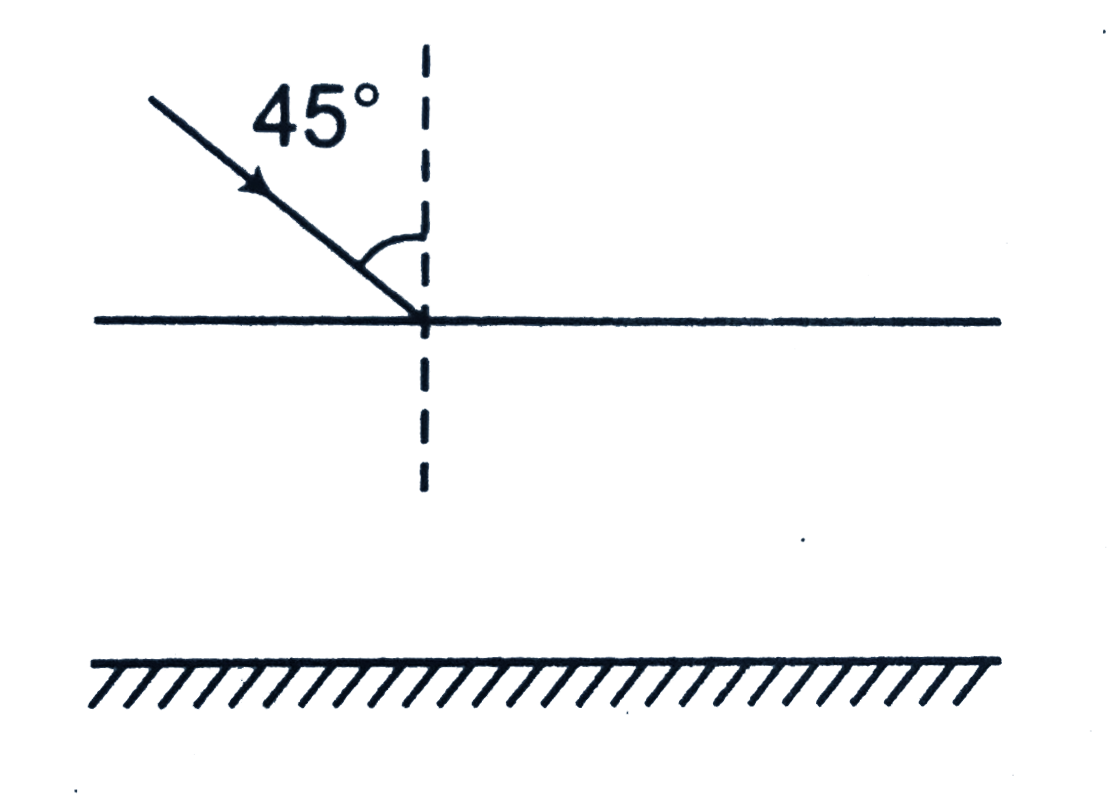Two glass slabs of same thickness are joined to form an L as shown. A ray is incident on the combination as shown (in the plane of paper). The final emergent ray will

come out at point A in the same direction as that of original ray.
come out at point A but not in the same direction as that of the orginal ray.
does not come out at point A but is in the same direction as that of the original ray.
does not come out at point A and is not in the same direction as that of the original ray.
The correct Answer is:A
Topper's Solved these Questions
- TEST PAPERSBOOK - BANSALCHAPTER - TEST PAPERSEXERCISE - PHYSICS SECTION - 1 PART-B [MULTIPLE CORRECT CHOICE TYPE]
5 Videos
- TEST PAPERSBOOK - BANSALCHAPTER - TEST PAPERSEXERCISE - PHYSICS SECTION - 1 PART-C [INTEGER TYPE]
5 Videos
- TEST PAPERSBOOK - BANSALCHAPTER - TEST PAPERSEXERCISE - MATHS SECTION-3 Part-C[ Integer type ]
10 Videos
- PROBABILITYBOOK - BANSALCHAPTER - PROBABILITYEXERCISE - All Questions
1 Videos
- THERMODYNAMICSBOOK - BANSALCHAPTER - THERMODYNAMICSEXERCISE - Match the column
7 Videos
Similar Questions

Two identical glass slabs of same thickness are joined to form an L shape as shown. A ray is incident on the combination as shown (in the plane of paper). The final emergent ray will choose, incorrect options(s):
View SolutionA ray of light is incident on a parallel slab of thickness t and refractive index n. If the angle of incidence θ is small, than the lateral displacement in the incident and emergent ray will be
View Solution
Knowledge Check

Two identical glass slabs of same thickness are joined to form an L shape as shown. A ray is incident on the combination as shown (in the plane of paper). The final emergent ray will choose, incorrect options(s):ACome out at point A in the same direction as that of original ray.BCome out at point A but not in the same direction as that of origional ray.CDoes not come out at point A but is in the same direction as original ray.DDoes not come out at point A and it is not in same direction as origional ray.A ray of light is incident on a parallel slab of thickness t and refractive index n. If the angle of incidence θ is small, than the lateral displacement in the incident and emergent ray will be
Atθ(n−1)nBtθnCtθnn−1Dtθ(n+1)nWhen rays of light are incident on a glass slab, then the incident ray and emergent ray are ……….. To each other.
AperpendicularBparallelCoppositeDconcurrent
A light ray is incident on a plane glass slab of thickness ‘t’ at an angle of incidence ‘i’ as shown in the figure. If μ is the refractive index of glass. Then find time taken by the light ray to travel through the slab.
View SolutionA ray of light incident on glass slab finally emerges out of it. The ray which emerges out is called :
View SolutionWhen rays of light are incident on a glass slab, then the incident ray and emergent ray are ____ to each other.
View SolutionOne side of a glass slab is silvered as shown in the figure. A ray of light is incident on the other side at angle of incidence 45∘. Refractive index of glass is given as √2. The deflection suffered by the ray when it comes out of the slab is

View SolutionOne side of a glass slab is silvered as shown in the figure. A ray of light is incident on the other side at angle of incidence 45∘. Refractive index of glass is given as √2. The deflection suffered by the ray when it comes out of the slab is

View Solution

